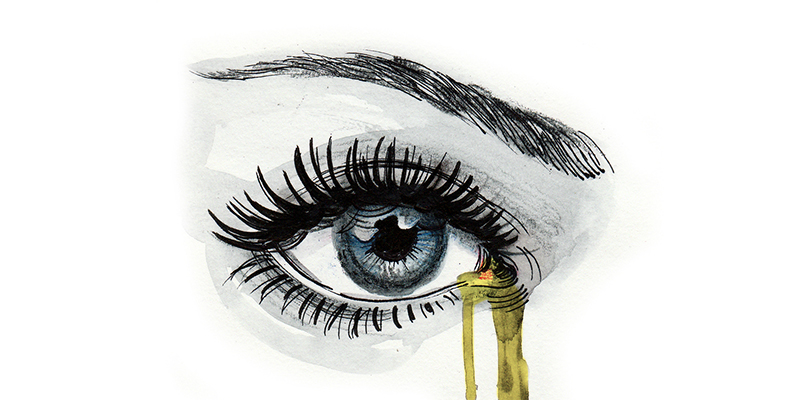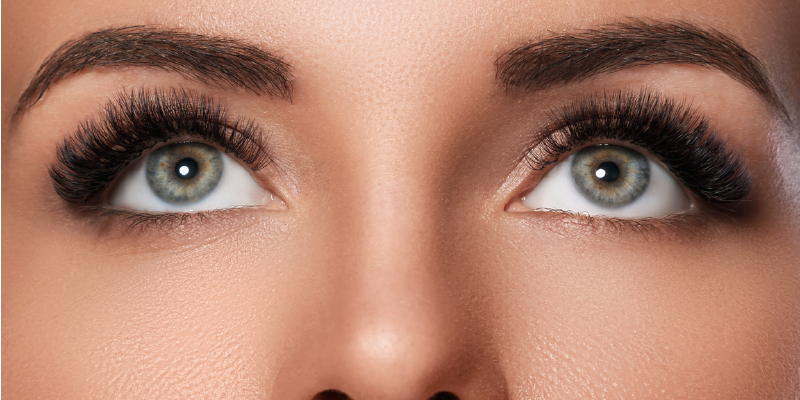The term “puffy eyes” is used to describe the swollen area surrounding your eyes. Puffiness under the eyes can occur for a variety of reasons but you might also experience puffiness on your upper eyelid. This condition often only affects your outward appearance, and can be remedied with various creams and plenty of sleep. In other, more severe cases, puffiness can create actual physical difficulties with your vision. This article will review some important information that you should know in order to help combat under eye puffiness.
Understanding the Causes of Puffy Eyes

Over the course of a person’s life, fat migrates from its location in the eye socket, creating a puffy area underneath the eyes, which may retain fluid. As a result, factors that encourage water retention cause this deposit to become more noticeable. Some of the most common reasons you might experience this include:
- Reduced circulation due to aging
- Alcohol consumption
- Allergic reactions
- Fluid retention due to metabolic imbalances
- Genetics
- Sleep deprivation
- Smoking
- Stress
- Thyroid problems
Ways to Treat Puffy Eyes

There are several easily available ways to treat puffy eyes. Some of the most effective treatments include:
- Applying something cold such as chilled cucumber slices or a compress to the area can significantly help to reduce puffiness.
- Changing your sleep schedule so that you are better rested.
- Reducing salt intake because a diet that is high in salt can increase overall water retention.
- Using eye creams to reduce dryness around your eyes can decrease sensitivity in the area and reduce puffiness.
- Gently massaging around the eye area can help to reduce swelling.
- Increasing the amount of non-sodium containing fluids that you drink will combat dehydration and improve your chances of avoiding puffy eyes.
- Keeping your head slightly elevated when reclining helps to prevent fluid retention in the eye area.
- Limiting or eliminating the use of alcohol and cigarettes.
- Staying away from topical ingredients like camphor, essential oils and fragrant plant extracts, because these are often associated with allergic reactions.
- Using eye drops to reduce puffiness caused by allergies.
- Wearing properly fitting contacts and making sure to correctly clean and dispose of them to reduce irritation.
If under eye puffiness is a severe and persistent problem, there is a surgical process called blepharoplasty that can be used to tighten the fat pad under your eyes. The surgery involves surgical incisions that are made along the skin contours above a person’s lower and upper eyelids and involves the cutting and removal of the tissue that is responsible for swelling around the eyes.
Additionally, carbon dioxide lasers are sometimes used to tighten and thicken the area as well as reduce dark circles under your eyes.
Eyes May Be Puffiest in the Morning
Because people do not blink while they sleep at night, many observe that puffiness is often the worst and most noticeable in the morning. Blinking helps reduce puffiness around your eyes because it helps to release fluids, a process that can reduce swelling. As a result, you can often expect to experience more puffiness under your eyes in the morning.
When Puffiness Indicates a Medical Condition
Puffy eyes that occur suddenly can be a sign that you have a medical condition such as chemical or food allergies, hay fever, pink eye, kidney failure or a thyroid disorder.
Cliradex Towelettes Can Reduce Puffy Eyes

Bio-Tissue manufactures Cliradex towelettes made of natural ingredients, which can prove to be particularly helpful in reducing irritation and under eye swelling. These towelettes are made with a 4-terpineol formula which is extracted from tea tree oil and they are also natural, organic and vegan.




